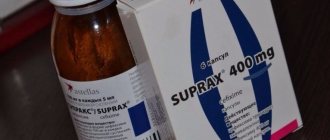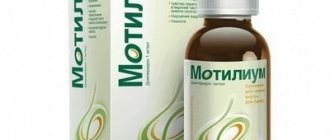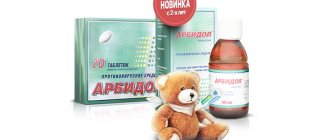special instructions
- It is not recommended to take Azitrox with food, as this reduces the rate of absorption of azithromycin in the gastrointestinal tract.
- If the patient does not take the medicine on time, the dose he missed should be taken as quickly as possible, and the next ones should be taken, keeping an interval of 24 hours between them.
- While taking the drug, as well as 2-3 weeks after the end of treatment, diarrhea (pseudomembranous colitis) may develop: it is caused by Clostridium difficile.
- In mild cases: it is necessary to stop treatment with the drug and ion exchange resins (colestyramine and colestipol) are prescribed.
- If the disease is severe (severe diarrhea), vancomycin, metronidazole or bacitracin are prescribed, as well as drugs to replace the loss of fluid, electrolytes and proteins. Medicines that have a depressing effect on intestinal motility should not be used.
- After using the drug, the patient may develop myasthenic syndrome or worsen existing myasthenia gravis.
If, after discontinuation of the drug, the patient continues to have side effects caused by hypersensitivity to the drug, further treatment is necessary under the supervision of a physician.
Operating principle
The drug is an antibiotic that belongs to the group of macrolides. It has a fairly wide range of therapeutic effects, so taking Azitrox is effective against many microorganisms, including intracellular and anaerobic bacteria. The drug suppresses the processes of protein synthesis in microbial cells, which is why the reproduction of the pathogen slows down. At the same time, a high dosage can have a bactericidal effect.
Streptococci, mycoplasmas, staphylococci, Haemophilus influenzae, gonococci, legionella, chlamydia, clostridia and many other microorganisms are sensitive to Azitrox. Only some types of staphylococci, bacteroides, pneumococci and enterococci may be resistant to such an antibiotic, so before starting treatment it is worth checking the sensitivity of the pathogen.
In the video below, a practicing dermatovenerologist answers the most frequently asked questions regarding the antibiotic azithromycin, which is the main active ingredient of Azitrox:
How to properly prepare a suspension
Although the drug is available in tablets and in the form of solutions for injections, such forms are suitable only for adults, because the content of the active substance in them is too high for a child. The optimal option for taking Azithromycin for children is a suspension. It can be used from 6 months to 12 years.
5 g of suspension contains 125 mg of azithromycin.
At the pharmacy, the medicine is sold in the form of a white powder. It is available in two versions: in a dose of 100 (for children weighing more than 5 kg) and 200 mg (for children weighing more than 15 kg) of azithromycin per 5 ml of suspension (20 ml and 30 ml bottles).
It needs to be bred at home. The package with the drug contains a special calibrated syringe with graduations of 2.5 and 5 ml. To prepare 35 ml of liquid solution, add 14.5 ml of distilled water to the contents of the bottle (30 ml, 1200 mg of azithromycin) and shake well until a homogeneous solution is obtained. Its quantity will be 5 ml more than required. This supply is necessary to compensate for the loss of medication that inevitably occurs when taking it. To obtain 25 ml of suspension (100 mg/5 ml), just add 11 ml of water.
The instructions for the azithromycin suspension for children indicate that as soon as the child drinks the medicine, he should be given some tea or juice to wash away any remaining drug in the mouth.
Freshly prepared mixture can be stored for 5 days, after which it is not recommended to use it. Before each use, the bottle should be shaken well.
Video
An interesting educational video by Dr. Komarovsky about the concept of antibiotics and the difference between bacterial and viral infections. This information will be very useful for mothers to understand so that they do not prescribe too much.
We've learned a lot about Azitrox, but that doesn't mean we can prescribe it to our baby (or ourselves). Only a doctor can analyze the child’s condition and, taking into account concomitant diseases, prescribe an antibiotic of this particular group, calculate an effective and at the same time safe dosage. Let's also not forget about the concept of resistance (immunity to drugs or addiction) and the more often antibiotics are taken, the more likely it is that it will no longer act on these bacteria, since they are already familiar with it. Therefore, it makes sense to know more about this wonderful, but at the same time specific concept that has cured many people - antibiotics, especially when it comes to a baby, your baby. Therefore, check with your doctor to see if an antibiotic is the best treatment option for your child. And under no circumstances give your baby what was prescribed to your neighbor’s. You, like any mother, probably have many stories of communication with doctors and antibiotics, stories of not entirely successful prescriptions and stories of magical recoveries, so we look forward to them.
Release forms and composition
The antibiotic Azitrox is available in the following forms:
- In the form of capsules (250 mg each), white, size zero, inside which there is a white or white-yellow powder. The capsules themselves are in packs of 6 or 10 pieces. At the pharmacy they are sold in a cardboard box containing 1, 2, 6 or 12 packages of capsules.
- In the form of capsules (500 mg each) size No. 00. These capsules have a white bottom and a yellow top. Capsules are packaged in blisters of 2, 3, 6 or 10 pieces. At the pharmacy they are sold in a cardboard box containing 1, 2, 6 or 12 cell packs of capsules.
- In the form of a powder (100 mg/5 ml or 200 mg/5 ml) from granules (crystals) of white (sometimes with a yellow or cream tint) or light yellow color. The powder has a faint fruity aroma. A suspension is prepared from the powder, which is taken orally. A ready-to-use suspension is a solution of homogeneous consistency with a fruity aroma. The color of the solution can be: white, light gray (with a yellow or cream tint), or light yellow. The powder is packaged in bottles (15.9 grams). In the pharmacy it is sold in a cardboard package, which, in addition to a bottle of powder, contains a pipette and a measuring spoon.
The capsule contains the following components:
- 250 or 500 mg azithromycin (active substance);
- as well as corn starch, mannitol (mannitol), sodium lauryl sulfate, magnesium stearate: excipients;
- capsule shell contains: gelatin (medicinal grade) and titanium dioxide (E171); The shell of 500 mg capsules additionally includes: dye E110 and dye E104.
The powder for preparing 1 bottle of suspension contains the following active ingredients:
- 400 or 800 mg azithromycin (active substance): as azithromycin dihydrate (419.3 or 838.6 mg);
- additionally: flavorings (“Vanilla”, “Banana”, “Cherry”), hyprolose, sodium carbonate, sucrose, xanthan gum.
Azitrox
Active substance:
Azithromycin*
Pharmgroup:
Macrolides and azalides
Average price in pharmacies
| Name | Manufacturer | average price |
| Azitrox 0.1/5ml 20ml n1 bottle pore d/susp i.n. | PHARMSTANDARD | 191.00 |
| Azitrox 0.2/5ml 20ml n1 bottle pore d/susp i.n. | PHARMSTANDARD | 305.00 |
| Azitrox 0.25 n6 caps | PHARMSTANDARD | 314.00 |
Analogs for the active substance:Azivok Azimicin Azitral Azithromycin Azithromycin Forte Azithromycin-OBL Azithromycin dihydrate AzitRus AzitRus forte Azicide Vero-Azithromycin Zetamax retard ZI-Factor Zitrolide Zitrolide forte Zithrocin Sumazid Sumaclid Sumamed Sumamed forte Sumamecin Sumamecin forte Sumamox Sumatrolide solutab Tremak-Sanovel Hemomycin Ecomed |
Instructions for use and dosage
To prepare a suspension from the powder, you need to take 9.5 ml of boiled and cooled water and pour it into a bottle with the powder. The volume of the prepared suspension should be 20 ml. The suspension should be stored in the refrigerator, but not frozen. The shelf life is 5 days, this is as long as is needed for the course of administration; at the end of the period, the suspension can be thrown away if it is not completely used up.
Before use, shake the bottle several times. In order to give your child the right dose, a measuring spoon is included with the bottle. When the baby takes the suspension, he must wash it all down with water. The measuring spoon should be rinsed well, dried and also stored in the refrigerator.
As we have already said, Azitrox suspension is taken once a day, and food intake should be one hour before and two hours after taking Azitrox (food reduces the therapeutic effect of the drug). Once a day means strictly once every 24 hours and an appointment should never be missed. If the baby was sleeping at this time, then you need to give it immediately when he wakes up, and then try to ensure that he takes the next dose exactly 24 hours later.
The dosage of the Azitrox suspension for children is determined based on the child’s weight, for this you need to multiply his kilograms by 10 mg, this will be a single dose of the drug Azitrox. For example, a child weighs 5 kg, in this case he is given 50 mg of medication once a day, but this is in general. Azitrox is taken for 3 to 5 days, the dosage regimen depends on the disease and is prescribed by a doctor.
Reviews
On most forums, the response to Azitrox suspension is mostly positive. Of the azalides, doctors prefer to prescribe Sumamed, but Azitrox is the next option as an analogue, they have the same composition, but Azitrox has the following advantages: it costs less, has a wide spectrum of action, the suspension has a pleasant taste, so children swallow it easily and there are no problems with it , ease of use, quick effect. Among the disadvantages, I don’t like the shelf life (5 days after opening), the preparation of the dosage, which is not very clearly prescribed, and some side effects.
Oksana: “My child is 2 years old and is sick all the time. Expensive antibiotics are always in my medicine cabinet. The last time was as always: in the morning my nose was running, then a cough began, by the evening I was already 39. The doctor came and said that there was a good drug that she prescribed to several children and there were good results. I agreed. In the morning it was much easier, but in the evening the temperature returned, and so on for two days, but from the fourth day everything was fine, the main thing was that there was no high temperature or runny nose, the cough gradually disappeared over another couple of days. The child already felt great, although only 4 days had passed. The side effects were a slight rash, but that’s how we react to everything.”
Arina: “This year is kind of terrible, there are so many viruses, starting at the end of September. And in October we already had purulent pharyngitis, we were prescribed Azitrox. My son is one and a half years old. From a difficult point - it is impossible to withstand exactly 24 hours, the child is either sleeping, or has just eaten, and after that it is useless to drink this antibiotic for two hours, as the doctor said. Fortunately, you only need to drink once a day, so we somehow managed it. The purulent pharyngitis went away by the fourth day, a little red throat remained, but it no longer hurt. The doctor said that curing such a degree of purulent form in 5 days is very good. It seems that we had no side effects, however, after taking it there was diarrhea, but maybe it was for another reason, I started making active juices. By the way, I liked that the suspension had a good taste; there were no problems at all with pushing the medicine into the child.”
Natalya: “My daughter developed a serious sore throat with a high fever. We tried to solve this issue in our own ways - candles, vinegar, syrup, but, of course, in the morning we had to call the pediatrician, this is a sore throat, no joke. She prescribed us several antibiotics to choose from. I settled on Azitrox suspension because its price is average among all those prescribed. I won’t say that my child drank with pleasure, but he still drank, otherwise you know how to give all this to a child. A day later there was no longer any fever, my throat hurt much less, although the redness remained. I felt a strong effect immediately, but I want to say that the bottle lasted for 4 days, not five.”
Why do pediatricians like to prescribe Azithromycin to children?
This drug belongs to the third generation of antibiotics - macrolides. It comes to the rescue if penicillins are powerless against harmful bacteria. Its main active ingredient is azithromycin.
The antibiotic demonstrates high effectiveness against a wide range of pathological microorganisms, including staphylococci. This is the only medicine that can defeat Haemophilus influenzae (which leads to meningitis and pneumonia).
Azithromycin easily penetrates and accumulates in sputum and tissues of the lungs, bronchi, skin and genitourinary organs. Its concentration in tissues is 10-50 times higher than in the blood, so it acts directly on the “epicenter” of inflammation. The principle of operation of this antibiotic is that it prevents the cells of microbial pathogens from synthesizing proteins, and without this they cannot exist.
The drug reaches its highest concentration in the body 2-3 hours after administration. It also has a slow elimination: it leaves the child’s body within 35-55 hours. That is why this antibiotic can be taken only once a day.
What is very important, Azithromycin is suitable for the treatment of children with allergies and bronchial asthma. Hemorrhoids kill the patient in 79% of cases
Hemorrhoids kill the patient in 79% of cases
There are also negative opinions
It is not surprising that the drug causes negative emotions in some consumers. They arise for various reasons. Some patients are dissatisfied with the medicine because of its ineffectiveness. They say that they were treated with medication, but there was no improvement. At the same time, my health gradually worsened. Subsequently, the need arose to use stronger antibiotics. Doctors say that such an effect is possible if the causative agent of the disease turns out to be insensitive to this active ingredient. If after two days of using the tablets you do not feel better, you should consult a doctor to change treatment tactics. There is no need to stuff yourself with useless pills. Preliminary laboratory tests of the sensitivity of microorganisms will help to avoid this.
Consumers have negative opinions about the drug due to the fact that their health worsened during treatment. After the first dose, patients began to complain of abdominal pain and diarrhea. Doctors warn: if diarrhea occurs no more than five times a day and there are no additional unpleasant symptoms, then treatment should not be stopped. Digestive upset occurs due to the fact that the antibiotic destroys all bacteria, including beneficial intestinal microflora. When the treatment is completed, she will recover. To alleviate this condition, doctors advise taking probiotic complexes during and after therapy.
Pharmacological properties
Pharmacodynamics
Azithromycin is a broad-spectrum antibiotic, a representative of the subgroup of macrolide antibiotics - azalides. Due to binding to the 50S ribosomal subunit, it inhibits peptide translocase at the translation stage, suppresses protein synthesis, and slows down the growth and reproduction of bacteria. Azitrox acts on intra- and extracellular pathogens bacteriostatically, and in high concentrations it has bactericidal properties.
Microflora against which azithromycin is active:
- gram-positive aerobic microorganisms: Streptococcus pyogenes, Streptococcus spp. (groups A, B, C, G), Streptococcus pneumoniae (penicillin-sensitive), Staphylococcus aureus (methicillin-sensitive);
- gram-negative aerobic microorganisms: Haemophilus parainfluenzae, Haemophilus influenzae, Pasteurella multocida, Moraxella catarrhalis, Neisseria gonorrhoeae, Legionella pneumophila;
- some anaerobic microorganisms: Fusobacterium spp., Clostridium perfringens, Prevotella spp., Porphyromonas spp.;
- other microorganisms: Borrelia burgdorferi, Chlamydia trachomatis, Chlamydia psittaci, Chlamydia pneumoniae, Mycoplasma hominis, Mycoplasma pneumonia.
Microorganisms that can develop resistance to azithromycin: gram-positive aerobes (penicillin-resistant Streptococcus pneumoniae).
Initially resistant to the action of Azitrox microorganisms: aerobic gram-positive microorganisms, including Staphylococcus epidermidis (methicillin-resistant strains), Staphylococcus aureus (methicillin-resistant strains), Enterococcus faecalis; anaerobic microorganisms, including Bacteroides fragilis.
Pharmacokinetics
Azithromycin is rapidly absorbed from the gastrointestinal tract (GIT). This is due to its lipophilicity and stability in an acidic environment. After oral administration of 500 mg, the maximum plasma concentration of azithromycin in the blood is reached in 2.5–3 hours, its value is 0.4 mg/l. Bioavailability – 37%.
Azithromycin is able to penetrate well into the respiratory tract, tissues and organs of the urogenital tract (including the prostate gland), soft tissues and skin. The high concentration of the substance in tissues (10–50 times higher than the plasma level) and the long half-life are a consequence of the low binding of the substance to plasma proteins. They are also due to the ability of azithromycin to penetrate eukaryotic cells and concentrate in the low pH environment surrounding lysosomes. In turn, this determines high plasma clearance and large apparent volume of distribution (31.1 l/kg)
Particularly important is the ability of the substance to accumulate, mainly in lysosomes, with the aim of eliminating intracellular pathogens. It has been established that azithromycin is delivered to sites of infection by phagocytes, where the substance is released during the process of phagocytosis
In foci of infection, the concentration of azithromycin significantly exceeds that in healthy tissues (on average, by 24–34%). It correlates with the degree of inflammatory edema.
Azithromycin does not have a significant effect on the function of phagocytes. The substance remains in bactericidal concentrations at the site of inflammation after taking the last dose for 5–7 days, which allows its use in short courses (3 and 5 days).
Demethylated in the liver, the resulting metabolites do not show activity.
Removal from blood plasma occurs in 2 stages:
- interval 8–24 hours after administration: half-life – 14–20 hours;
- interval 24–72 hours after administration: half-life – 41 hours.
This allows you to use Azitrox once a day.
Azithromycin is excreted mainly unchanged by the kidneys and intestines (12 and 50%, respectively).
special instructions
Since simultaneous administration of Azitrox with food reduces and slows down the absorption of azithromycin in the gastrointestinal tract, it should not be taken with food.
If you miss the next dose of the drug, the missed dose should be taken as soon as possible, and subsequent doses should be taken at an interval of 24 hours.
While using Azitrox, both while taking it and 2-3 weeks after completion of the course, pseudomembranous colitis (diarrhea caused by Clostridium difficile) may develop. For mild cases of the disease, it is enough to discontinue Azitrox and prescribe ion exchange resins (colestyramine, colestipol). In case of severe diarrhea, it is recommended to replace the loss of fluid, electrolytes and protein; Vancomycin, bacitracin, or metronidazole should be prescribed. It is strictly unacceptable to use medications that inhibit intestinal motility.
A consequence of taking Azitrox may be the development of myasthenic syndrome or an exacerbation of existing myasthenia gravis.
If hypersensitivity reactions persist in some patients after discontinuation of treatment, appropriate therapy under medical supervision is required.
Impact on the ability to drive vehicles and complex mechanisms
If adverse reactions from the central nervous system occur during the use of Azitrox, patients are advised to refrain from driving vehicles.
Brief summary
The instructions for use call the drug "Azithromycin" an effective antibiotic. Tablets (500 mg dosage) can only be taken by adults. Before using the medication, you should see a doctor. If you take the pills incorrectly, there is a risk of superinfection. Resistant bacteria are formed in the body, which cannot be eliminated by the claimed remedy in the future.
If you experience an allergic reaction during treatment, you must inform your doctor. For yourself, you need to remember that medications based on azithromycin are not suitable for you. In the future, taking such medications may provoke a more violent reaction. There are cases where an allergy began with a banal rash and ended with severe swelling.
Antibiotics in modern life help a person get rid of many infections. Many consumers refuse such medications, assuming they are dangerous and have negative effects. “Caring” parents try to shorten the course of antibiotics for their children, giving the medicine for 2-3 days instead of the prescribed five. All this becomes a fatal mistake. You need to use Azithromycin for at least three days, even if you feel much better on the first day. Do not deviate from the regimen recommended by your doctor. In this case, you will recover quickly and with minimal health consequences. All the best, don't get sick!
Instructions for use
How to dilute the powder
To prepare the suspension, 9.5 milliliters of water is poured into the bottle, which is first brought to a boil and then cooled. To determine the exact amount of water for dilution, use the pipette located inside the package. By shaking the powder filled with water, you need to achieve homogeneity of the liquid. The resulting suspension will be presented in a volume of 20 ml.
How often to take
It is recommended to take the medicine once a day
, shaking the bottle before use. The suspension is given to the child in the required dose one hour before feeding or two hours after eating. For dosage, use either a measuring spoon or a pipette.
Immediately after swallowing the syrup, give the child some water
. This will help clear the drug from your mouth and swallow it completely. The spoon or pipette is washed well under running water and, after drying, kept in the Azitrox package.
Dosage
The dose of the drug for a small child is determined individually,
After all, for the calculation you need to know the baby’s body weight. The number of kilograms is multiplied by 10 mg and a single dosage of Azitrox is obtained. For example, a child weighs 7 kilograms, then he is given a drug per day at the rate of 70 mg of the active substance.
For babies weighing less than 10 kg, a bottle containing 100 mg of azithromycin in 5 ml of the prepared suspension is used. Children weighing 5 kg are given 2.5 ml of medication (this corresponds to 50 mg), those weighing 6 kg - 3 ml, and then for each additional kg add 0.5 ml (this volume contains 10 mg of azithromycin).
With a weight of 10-14 kg, a child is given 5 ml of this form of medication. If the baby weighs more than 15 kg, it is more convenient to use a bottle with a higher concentration of azithromycin.
However, this medicine can be given at lower weights. Its single dose will be as follows:
If the child weighs more than 45 kg, he can be given 12.5 ml of suspension or switch to capsules, because a single dose will be 500 mg.
Treatment of Lyme disease begins with an increased dosage of medication.
On the first day of therapy, the drug is given at the rate of 20 mg per kg of the child’s weight. Next, the dosage is reduced to 10 mg per 1 kg.
Admission rules
In the form of capsules, the drug is taken once a day 2 hours after a meal or an hour before. Instructions for use contain the following recommendations for adults:
- infectious lesions of the upper and lower respiratory tract - one capsule for 3 days;
- skin infections and soft tissue lesions - 2 capsules on the first day, from 2 to 5 days - one capsule at a time;
- uncomplicated urethritis and cervicitis - 2 tablets at a time, once;
- in a complicated form - 3 times 2 tablets with an interval of 7 days;
- Lyme disease - as in skin infections;
- ulcerative lesions of the stomach and duodenum - 2 tablets for 3 days.
Children over 12 years of age are recommended to take the product in capsule form at a dosage of 250 mg. The dosage is calculated at 10 mg per kilogram of weight in the first three days, in subsequent days it can be reduced. If the child’s weight is more than 45 kg, then the dosage is prescribed by analogy with an adult.
For the treatment of young children, the drug is used in the form of a suspension. It should be taken once a day before or after meals, just like capsules. The recommended dosage for children is 10 mg per kilogram of weight, but not longer than 3 days. If the weight is less than 10 kg, then a suspension with a concentration of 100 mg per 5 ml is prescribed. For adults, the dosage is similar to capsules - 500 mg per day. You cannot self-medicate. The concentration of the drug and dosage are determined by the doctor depending on the child’s age, diagnosis and concomitant diseases.
To prepare the suspension, you need to add boiled or distilled water to the bottle, measuring the required volume using the included pipette. Then the bottle is shaken until a homogeneous mass is obtained. After preparation, the suspension should be stored in packaging for no more than 5 days at temperatures up to 25 degrees, and freezing it is prohibited. The bottle is shaken before each dose, and a pipette is used for dosing.
After taking the suspension, you need to give the child some water to wash away any remaining product from the mouth. After administration, the pipette is washed, dried and stored next to the bottle itself.
Contraindications and side effects
Side effects after taking Azitrox may occur if the recommended dosage is significantly exceeded or if the child has an individual intolerance to the components of the drug.
If dizziness, nausea, vomiting, diarrhea, pain in the abdominal area or other pathological conditions occur, antibiotic therapy should be discontinued.
The following factors are contraindications for the use of the drug:
- children up to six months;
- individual intolerance to azithromycin;
- fructose intolerance;
- increased sensitivity to antibiotics;
- deficiency of sucrose in the body;
- glucose-galactose malabsorption;
- serious pathologies of the liver and kidneys.
Exceeding the recommended course of treatment may have a negative impact on the functioning of some internal organs and the hematopoietic system. The antibiotic can provoke leukopenia, thrombocytopenia or neutropenia. Urine test results may also be abnormal and unreliable.
If the drug causes serious pathologies, then the child must undergo an examination and symptomatic treatment.
What does Azithromycin 500 mg help with?
The instructions for use recommend that all patients who need to use an antibiotic first undergo tests. Despite the fact that the medication has a wide spectrum of action, it would be more advisable to verify its effectiveness. A smear to determine the sensitivity of pathogenic flora can be taken from the nose, throat, sputum, vagina or urethra. More precise directions are given by the doctor who is going to prescribe an antimicrobial medicine.
Reviews about the drug Azithromycin 500 say that the antibiotic helps with a runny nose, cough, sore throat or earache, and saves from high fever. The medication also copes with skin diseases, infections of the reproductive and urinary system, inflammatory diseases of the digestive tract (manifested by pain, discomfort in the abdomen). The indication for the use of an antibiotic is laboratory confirmed sensitivity of microorganisms to the declared active substance. If you refer to the instructions, you can find out that Azithromycin is used for:
- bacterial infections of the ENT organs and upper respiratory system (sinusitis, sinusitis, tonsillitis, nasopharyngitis, otitis media, scarlet fever);
- lesions of the lower respiratory tract (bronchitis, tracheitis, pneumonia);
- infections of soft tissues, mucous surfaces and skin (erysipelas, bacterial dermatoses);
- pathologies of the urinary and reproductive systems in women and men (cervicitis, urethritis, cystitis, chlamydia);
- diseases of the digestive tract (ulcers).
Directions for use and storage conditions
The Azitrox suspension is prescribed to small children on a purely individual basis in each case; basically, the calculation is carried out in such a way that the child’s weight is taken and multiplied by 10 mg. Thus, a single dosage of the drug is calculated. The interval between doses of this medicine is determined by your pediatrician. To take the drug, pour it in the required amount into a measuring spoon and give it to the child to swallow, after which the child must be given the medicine to drink with water.
When taking the medicine, be sure to follow the recommendations and take it one hour before meals or two hours after meals.
The dosage of the drug and the course of treatment are determined by the treating pediatrician
In each case, the dosage of the drug and the course of treatment are determined by the treating pediatrician. Under no circumstances should you self-medicate, or stop taking the drug yourself or change the dosage.
You should not combine Azitrox with the following medications:
- antacid medications;
- with digoxin;
- cyclosporine;
- terfenadine;
- quinidine.
As mentioned earlier, Azitrox is taken individually in each case. If for some reason a dose of the drug was missed, the suspension is taken immediately as soon as a missed dose is detected.
The duration of treatment is also determined by the pediatrician, but generally this medication lasts about three days, in some situations the duration of treatment can reach five days. After discontinuation of the drug, the cumulative effect of Azitrox retains its effect for another week.
If for some reason the drug was missed, the suspension is taken by the child immediately
The drug must be stored under certain conditions. First of all, it is necessary to store Azitrox at a temperature of -15 to 25 degrees. As for humidity, it should be within normal limits. Among other things, you should definitely ensure that children do not have access to this medicine. Manufacturers recommend storing the drug for no more than two years from the date of its manufacture. This applies to undiluted medicine.
After water is added to the suspension and it is diluted, the medicine must be stored in the refrigerator for no more than five days. Freezing the finished suspension is strictly prohibited.
Overdose
We are sure that this cannot happen, because mothers are very attentive to such things, but if for some reason this happens, then the baby faces vomiting, diarrhea, and hearing loss. If the condition is mild, the child should be given activated charcoal and not leave it for a long time, observing the condition.
If the condition is more severe, you need to call an ambulance and rinse the child’s stomach . If the child is an infant, then definitely if bad signs appear, you should immediately call an ambulance.
Interaction with other medications
When combined with other medications during concomitant or auxiliary therapy, Azitrox exhibits the following characteristic properties:
- The effect of the antibiotic is reduced when interacting with magnesium or aluminum containing medications, as well as with alcohol tinctures.
- Concomitant use with heart medications may cause tachycardia.
- Joint use with antispasmodics increases the toxicity of painkillers.
- Tetracycline group drugs enhance the clinical effect of Azitrox.
- The antibiotic is incompatible with Heparin, since the latter neutralizes the effect of azithromycin.
To prevent microflora disturbances after taking antibiotics, you should take suitable probiotics.
Finally, we remind parents that the suspension is taken at 24-hour intervals.
The daily dose should not be missed. If the child did not take the medicine on time because he was sleeping, the antibiotic is given immediately upon awakening. The next dose is given strictly every other day.
Health to your children!
Antonina Voitenko
The drug in capsule form contains azithromycin dihydrate
in an amount of 250 mg or 500 mg, depending on the release form and special excipients. The suspension contains 0.2 g of the main substance.
Analogs
Azitrox suspension can be replaced by drugs containing the same azithromycin as the main active ingredient. For children, the following analogues are possible:
- Sumamed is the best analogue of Azitrox, it is also most suitable for children, it is produced in the form of a powder, which is diluted, as well as in the form of capsules and tablets;
- Azithromycin, release forms - tablets, capsules and syrup;
- AzitRus are portioned sachets that need to be dissolved;
- Chemomycin - the drug exists in the form of powder and tablets;
- Zee Factor, Sumaklid, Sumamecin are less popular, but in the absence of everything else, the drugs are quite high quality.
Instructions for use
How to dilute the powder
To prepare the suspension, 9.5 milliliters of water is poured into the bottle, which is first brought to a boil and then cooled. To determine the exact amount of water for dilution, use the pipette located inside the package. By shaking the powder filled with water, you need to achieve homogeneity of the liquid. The resulting suspension will be presented in a volume of 20 ml.
How often to take
It is recommended to take the medicine once a day, shaking the bottle before use. The suspension is given to the child in the required dose one hour before feeding or two hours after eating. For dosage, use either a measuring spoon or a pipette.
Immediately after swallowing the syrup, you should give the child some water. This will help clear the drug from your mouth and swallow it completely. The spoon or pipette is washed well under running water and, after drying, kept in the Azitrox package.
Dosage
The dose of the drug for a small child is determined individually, because the calculation requires knowing the baby’s body weight. The number of kilograms is multiplied by 10 mg and a single dosage of Azitrox is obtained. For example, a child weighs 7 kilograms, then he is given a drug per day at the rate of 70 mg of the active substance.
For babies weighing less than 10 kg, a bottle containing 100 mg of azithromycin in 5 ml of the prepared suspension is used. Children weighing 5 kg are given 2.5 ml of medication (this corresponds to 50 mg), those weighing 6 kg - 3 ml, and then for each additional kg add 0.5 ml (this volume contains 10 mg of azithromycin).
With a weight of 10-14 kg, a child is given 5 ml of this form of medication. If the baby weighs more than 15 kg, it is more convenient to use a bottle with a higher concentration of azithromycin. However, this medicine can be given at lower weights. Its single dose will be as follows:
| For a child weighing 6 kg | 1.5 ml suspension (contains 60 mg of active substance) |
| For a baby weighing 7 kg | 1.8 ml of medicine (will give 70 mg of azithromycin) |
| For a baby weighing 8 kg | 2 ml of the drug (includes 80 mg of antibiotic) |
| For a baby weighing 9 kg | 2.3 ml suspension (contains 90 mg of active ingredient) |
| Weighing from 10 to 14 kg | 2.5 ml of medicine (100 mg azithromycin) |
| Weighing from 15 to 24 kg | 5 ml of the drug (contains 200 mg of active substance) |
| Weighing from 25 to 34 kg | 7.5 ml suspension (300 mg antibiotic) |
| Weighing from 35 to 44 kg | 10 ml of medicine (gives 400 mg of active substance) |
If the child weighs more than 45 kg, he can be given 12.5 ml of suspension or switch to capsules, because a single dose will be 500 mg.
Treatment of Lyme disease begins with an increased dosage of medication. On the first day of therapy, the drug is given at the rate of 20 mg per kg of the child’s weight. Next, the dosage is reduced to 10 mg per 1 kg.
Injections
Less often prescribed to patients is Azithromycin in the form of injections. The medicine is available in the same dosage: Azithromycin 500. With this use, 3 tablets are replaced by three ampoules. The powder contained in the bottle must first be diluted with a solvent. The medication is used to treat the same diseases as the tablets. But more often injections are prescribed for community-acquired pneumonia and diseases of the genitourinary tract. The peculiarity of the application is that in the first 1-3 days the medicine is administered intravenously or intramuscularly at a dose of 500 mg. After this, the patient is transferred to an oral antibiotic.
The number of infusions is set individually in accordance with the clinical picture of the disease. After injection, the active substance is quickly distributed in the plasma, from where it enters the organs. At the site of infection, the concentration of azithromycin is 50 times higher than in the blood.











